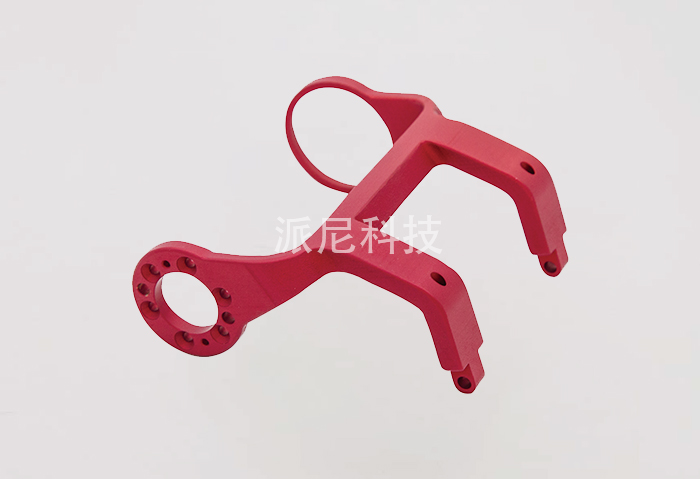
Shanghai machining manufacturers say the important position of milling machine in machining
The milling machine completes the metal forming by rotating the cutter and moving along the axis on the workpiece. Obviously, the orientation of the milling machine is very important in machining.
Although milling machines are primarily used for flat and square finishes, they are also used for many other purposes. Skilled technicians can use a milling machine to cut viewpoints, fillet, boring, and can use some of the equipment attached to the milling machine machining arc, semi-arc and spiral surface (using spiral tools - double or multiple spiral tools). Gear teeth, dovetail grooves and T grooves can also be machined by some special cutting tools in milling machines. More importantly, the shape of the workpiece in the milling machine can be completely manual operation, without the need to use CNC machining!
Now, if we use computer control to drive the spindle of the milling machine, then the size of the workpiece can be processed will be much larger. Using a computer-aided design/computer-aided production (CAD) generator to control the milling machine, it can produce virtually any shape. As long as it is able to appear on the computer screen of the workpiece shape can be used fundamentally out of milling processing.
The operation of milling
The fundamental operations in 12 can be divided into four types:
(1) End milling -- cutting the plane with the tail of the cutter teeth.
(2) Copying cutting -- machining the shape of the workpiece with the side of the tool.
(3) Drill holes.
(4) boring - constitute the internal circular appearance.

1. Face milling
The tool is located at the required depth of frontal incision below the surface of the workpiece, and the workpiece is then engaged with the tool in a specific radial orientation, known as radial engagement. Radial engagement is expressed as the ratio of the length value of the tool's radial contact with the workpiece to its diameter. Face milling can be done with three different milling cutters:
Face milling cutter:
This tool is specially made, the primary materials are high speed steel and hard alloy. Tipped carbide cutting tools are currently commonly used in industry. The face milling cutter can reach a medium high fine finish of 64 and may reach a more ambitious accuracy.
End milling cutter:
Since they have teeth on both the end face and the circumferential direction, the cutter is used to cut the end face. Together, when the end teeth are used for grinding, the end milling cutter cuts straight into the workpiece, similar to drilling. The face milling cutter cannot drill, so it is necessary to settle the DOC when it is not in touch with the workpiece. End milling cutters with two or four teeth are common, and three teeth end milling cutters are often used to cut metals such as aluminum at high speeds. A small number of end milling cutters are made of cobalt high speed steel, which has higher hardness and endurance than standard high speed steel end milling cutters, but cobalt cutters are more expensive. This residual cost for cobaltated HSS is sometimes not justified, except in cases where the carbide tool has a broken cutting edge due to mechanical vibration or where the general HSS alloy simply becomes dull due to workpiece hardness.
End milling cutters are sometimes replaced by all-hard and feed cutters, which cost more than high speed alloy steel but cut three times as fast as high speed alloy steel. The end milling cutter is sometimes also used to insert cemented carbide. End milling is capable of achieving a medium finish, which can be compared with face milling at relatively low speeds when machining the exterior.
Throwing knife:
A flying cutter is a single tooth surface cutter. Because of its low cutting speed, this cutter is more used in installation work than in mass production. It is necessary to lay quite precisely on a flat and perhaps more lubricated surface. The tipped high speed steel or carbide tip of a throwing knife is clamped with something similar to the head of a lathe. Although flying knives are cheap and available in shops, they are slow to cut and have serious safety concerns. The knife sensation and centrifugal force flying to the outer tail end are noteworthy work for the flying knife incision.
2. Cut circumferentially
Circumferential cutting (also called molding cutting) as the name suggests is to use the side teeth of the tool to cut the inside or outside of the workpiece, Z commonly used circumferential cutting tool is the end milling cutter. We should be alert to the direction of the smooth milling, to know that the difference in force depends on the direction of the feed, when cutting with the edge teeth, the tool can be driven by the driving wheel along a certain way in the workpiece forward to - known as smooth milling. During up-milling, the direction of rotation of the tool in the workpiece always causes the machining feed shaft and the workpiece to pass through the cut point. You may be able to reverse the feed direction of the tool along the circumference, and the direction of the cut teeth is opposite to the direction of the feed axis, called inverse milling. It's important to understand the differences for safety, service life, and finish.
3. Step and cavity machining
Cutting to the depth of cutting: in the cavity machining before the first processing should be in the rough depth of the local processing a hole - this operation is similar to drilling, called the pin, is used to end the end milling cutter, and then the milling cutter side processing cavity. With one or more teeth through the central surface of the correct grinding can be completed three or four grooves of the milling cutter insertion milling machining. Most two-groove mills can be inserted and milling, but not all can be used! Some hollow center, no cutting edge tool can not be inserted and milling.
Oblique milling cutter cutting depth: with the side of the end milling cutter for milling known as oblique milling or abbreviated oblique milling, this method is not often used in manual operations, mainly used in CNC machining, because it is more simple than direct drilling chip discharge, and it can make the coolant directly to the processing site. Spiral milling has two layers of advantages than linear milling. First, it can obstruct the cutting tool and the cavity tangent, and then avoid leaving processing marks on the finished surface, which is called spiral inclined milling. The cutter is spiraling down.
4. Shape and cut
Chamfering: chamfering is generally used in the cavity and the outside of the foot, the inside chamfering is generally called the inside corner. The tooth line of chamfered cutter has two kinds of concave and convex. Machining a workpiece with a forming cutter on a lathe is called forming machining. There are two kinds of end milling cutter for concave Angle, which are ball end milling cutter and round end milling cutter.
Custom molding: When working in a particular shape, the simplest molding tool in the shop is the flying knife, whose high speed steel blade can work in any shape without the need for special equipment.
5. Drill or expand holes
6. Boring
/Founded in1992
+86 021-6890-8743
Contact:Tom
Email(1): tom_pioneer@outlook.com
Email(2): tom009_pioneer@163.com
website: http://detroitfashionschool.com/en
Address: 769 Antai Road, Lingang New Zone, China (Shanghai) Pilot Free Trade Zone
